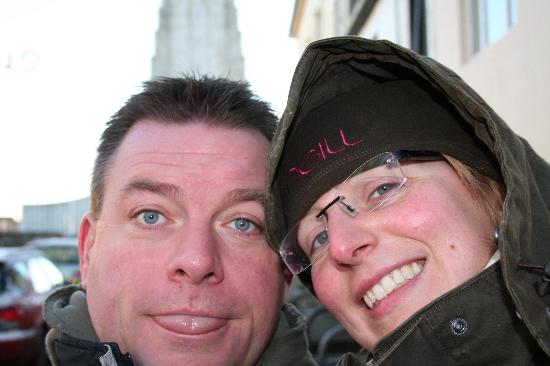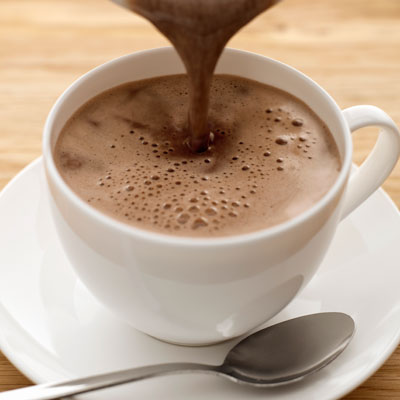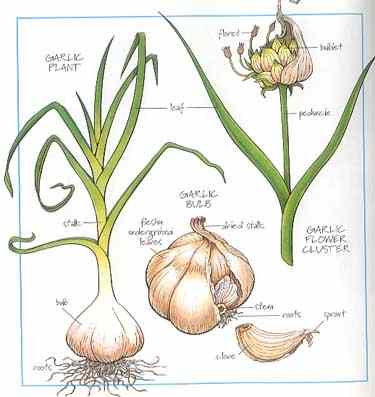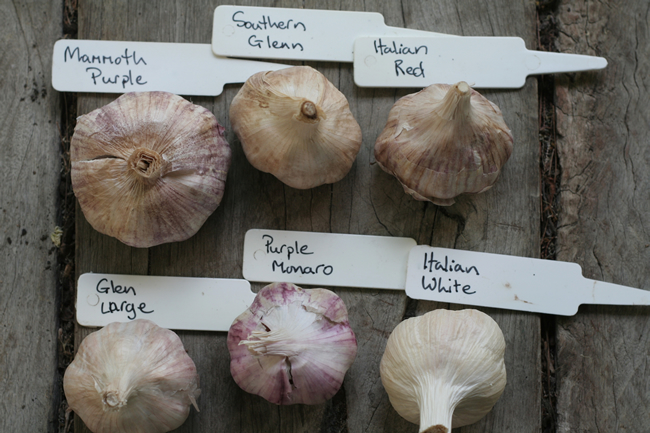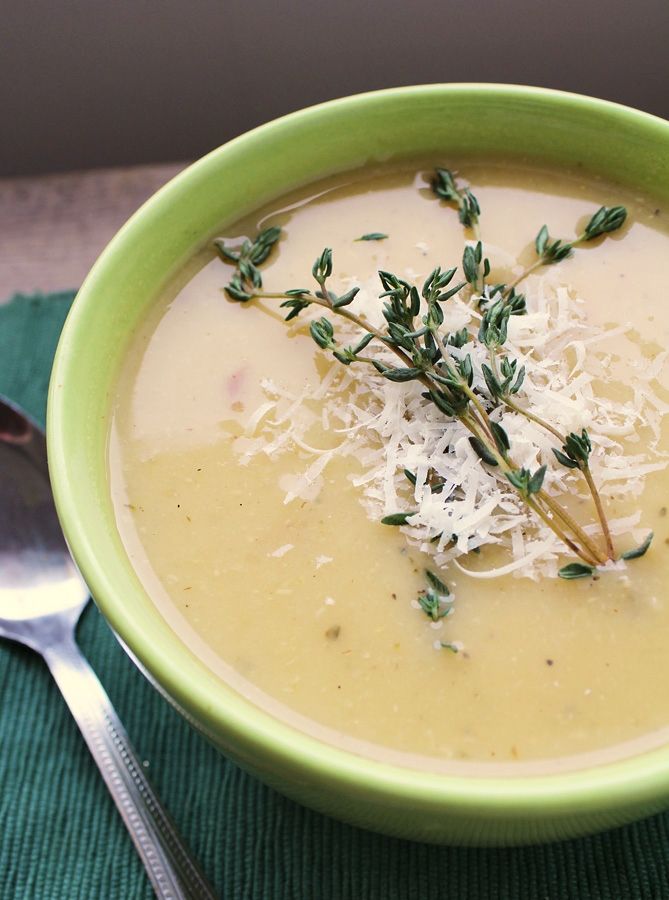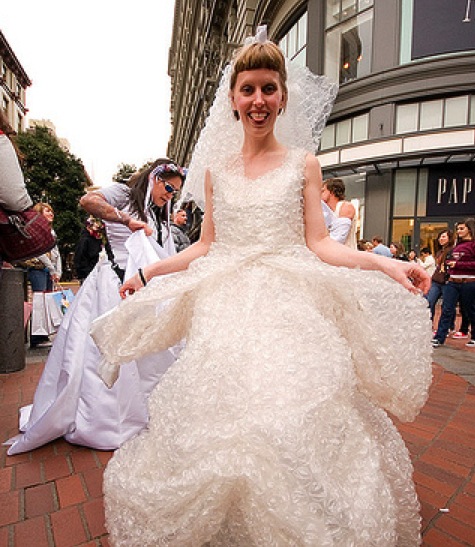Thanksgiving is this week, so I'm sure you'd expect me to do a post about something to do with Thanksgiving. I've already done a lot of Thanksgiving entries (see Ripe Apples at right). So instead, I'm going to talk about something else that is currently of interest to me: the bobby pin.

Bobby pins fanned decoratively from a messy bun. What do you think, yea or nay?
(Photo from Free People Blog)
I got my hair cut recently, and I am not a fan. One of the things that I let the hairdresser do was give me more bangs. I have bangs already, but not a huge honking hunk of them. My goal is to cover my large forehead, not to accentuate it and make a great big flashing sign that shouts in bang-speak, "HEY, BIG FOREHEAD HERE!"
But every hairdresser I have encountered who lays eyes on my rather minimal bangs sees them as some sort of Wrong That Must Be Corrected. They immediately want to carve out a big V-shape's worth of hair and turn this into bangs and thereby plop a huge hunk of heavy hair on top of my face.

This enormous amount of bangs looks good on some people, but not on me. See how she's got a long, thin face? (This woman's name is Carly Rae Jepsen, by the way.) Let's just say my face is not shaped like that. I also have thicker hair than she does. So big honkin' bangs like this do not look good on me.
(Photo from Become Gorgeous)

This sort of thing -- minimal bangs that are not so heavy and that don't start all the way back at the crown of my head -- looks better on me. This is Mariska Hargitay, who plays probably the only sex crimes detective whose hairstyle changes almost as often as her caseload. Note that her face is not long and slender but wider and more round.
(Photo from somewhere on this person's Pinterest page)
The one hairdresser I was going to for several years learned that I hated this and did not try to give me the Big Bang Treatment. But recently I went to a new person -- referral discount, close to my house, thought I'd try a change -- and when she suggested making more bangs, I forgot how much I hated that and said, "Sure, whatever you want." Because, you know, you're supposed to trust a hairdresser to make you look better, not worse, right? The unfortunate result: a ton of thick heavy bangs pouffing up at the top of my head, making my big head look even bigger. Ugh.
Immediately I resolved to allow the extra baggage of bangs to grow out. I have sectioned off the undesirable hunk, and to make them look as if they're part of the main, full-length mane, I've started keeping those bangs tucked down with the aid of that most crucial instrument, the bobby pin.
I haven't had to do this trick since high school, when another overzealous hairdresser pulled this same too-much-bangs fiasco on me, and I had to let those grow out. Took about a year, actually, given how long my hair was at the time. Anyway, I haven't forgotten that bobby pin trick after all this time, so I put it to use immediately.
Having now become so dependent on this long-unused beauty essential, I've started thinking about it. Every time I insert one, I think, Bobby pin. That's a weird phrase. Bobby pin. So of course I had to find out why we call these handy gizmos "bobby pins."

Bobby pins
(Photo from Sam the Bear)

An exemplary bob from the 1920s, worn here by Louise Brooks. You can imagine how the hair on either side of her face might slide easily and often into her eyes. Ah, but not with the aid of the ever-discreet bobby pin!
(Photo from MrsKHistory)
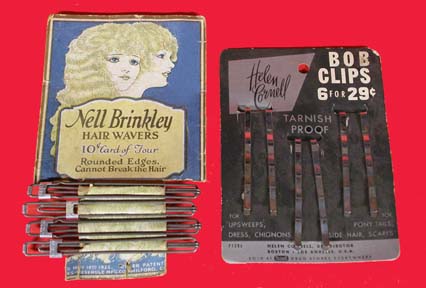
Note the vintage Bob Clips at right. They have a shape similar to the bobby pins we use today.
(Photo from Hair Archives)

The Gayla Hold-Bob Bobby Pins name says it all: these pins will hold your bob in place.
(Photo from Michelle Shepherd NZ)

And this ad explains it fully: "Bobbed Heads Want the Bobbie Pin: Keeps Hair Tidy." I'm sure there was some very scientific research behind that 7 out of 11 heads statistic.
(Image from Michelle Shepherd NZ)

I had a pair of decorative bobby pins that looked something like this, which I think belonged to my Great Aunt Ceil. I unfortunately lost one at a particularly fun Halloween party.
(Photo from Amazon, pins from Beadaholique. A 6-piece set of these pins can be yours from Amazon for about $5: Beadaholique 6-Piece Metal Bobby Pins with Pad for Gluing, 10mm, Silver )
)

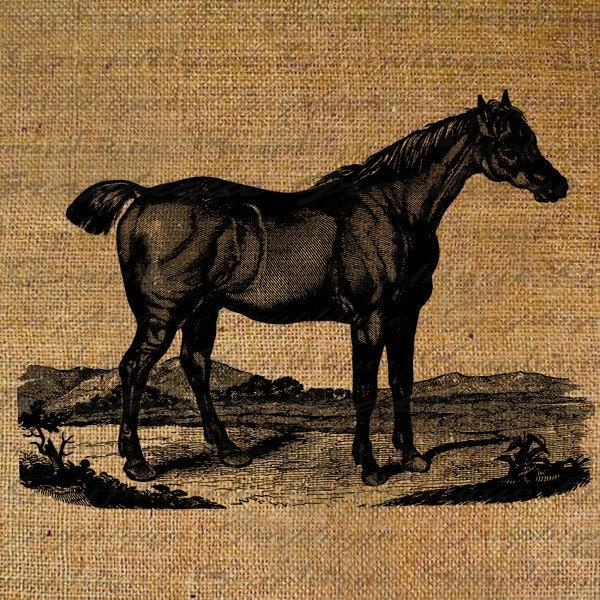
Horse with a bobbed tail
(Burlap decorated towel available on Etsy for $1)

The barber lops off the ponytail, like this, and gives you a bob.
(Image from The Hourglass Files)

Jeanne d'Arc. The bob looks good on her in this depiction, don't you think?
(Image from Catholic Tradition)

Irene Castle, sporting her famous bob. Notice she has some of her hair pinned back -- with bobby pins, no doubt.
(Photo sourced from the Hair Archives)

French actress Polaire cut her hair short well before the bob became popular -- as early as the 1890s. But she was considered too scandalous for everyone else to adopt her style, at least, not until a few decades had passed.
(Photo sourced from Photographs, Films, Literature & Quotes from the Bygone Era)
Sources
V is for Vintage, The Bob: history of a hairstyle
Smithsonian, The History of the Flapper, Part 4: Emboldened by the Bob
Hair Archives, The Bob
Online Etymology Dictionary, bob
History.com, Joan of Arc

Bobby pins fanned decoratively from a messy bun. What do you think, yea or nay?
(Photo from Free People Blog)
I got my hair cut recently, and I am not a fan. One of the things that I let the hairdresser do was give me more bangs. I have bangs already, but not a huge honking hunk of them. My goal is to cover my large forehead, not to accentuate it and make a great big flashing sign that shouts in bang-speak, "HEY, BIG FOREHEAD HERE!"
But every hairdresser I have encountered who lays eyes on my rather minimal bangs sees them as some sort of Wrong That Must Be Corrected. They immediately want to carve out a big V-shape's worth of hair and turn this into bangs and thereby plop a huge hunk of heavy hair on top of my face.

This enormous amount of bangs looks good on some people, but not on me. See how she's got a long, thin face? (This woman's name is Carly Rae Jepsen, by the way.) Let's just say my face is not shaped like that. I also have thicker hair than she does. So big honkin' bangs like this do not look good on me.
(Photo from Become Gorgeous)

This sort of thing -- minimal bangs that are not so heavy and that don't start all the way back at the crown of my head -- looks better on me. This is Mariska Hargitay, who plays probably the only sex crimes detective whose hairstyle changes almost as often as her caseload. Note that her face is not long and slender but wider and more round.
(Photo from somewhere on this person's Pinterest page)
The one hairdresser I was going to for several years learned that I hated this and did not try to give me the Big Bang Treatment. But recently I went to a new person -- referral discount, close to my house, thought I'd try a change -- and when she suggested making more bangs, I forgot how much I hated that and said, "Sure, whatever you want." Because, you know, you're supposed to trust a hairdresser to make you look better, not worse, right? The unfortunate result: a ton of thick heavy bangs pouffing up at the top of my head, making my big head look even bigger. Ugh.
Immediately I resolved to allow the extra baggage of bangs to grow out. I have sectioned off the undesirable hunk, and to make them look as if they're part of the main, full-length mane, I've started keeping those bangs tucked down with the aid of that most crucial instrument, the bobby pin.
I haven't had to do this trick since high school, when another overzealous hairdresser pulled this same too-much-bangs fiasco on me, and I had to let those grow out. Took about a year, actually, given how long my hair was at the time. Anyway, I haven't forgotten that bobby pin trick after all this time, so I put it to use immediately.
Having now become so dependent on this long-unused beauty essential, I've started thinking about it. Every time I insert one, I think, Bobby pin. That's a weird phrase. Bobby pin. So of course I had to find out why we call these handy gizmos "bobby pins."

Bobby pins
(Photo from Sam the Bear)
The Pins
- Bobby pins got their name when they became popular, which was during the hey-day of the bob haircut, in the 1920s. Women used these pins to keep their bob haircut out of the face.

An exemplary bob from the 1920s, worn here by Louise Brooks. You can imagine how the hair on either side of her face might slide easily and often into her eyes. Ah, but not with the aid of the ever-discreet bobby pin!
(Photo from MrsKHistory)

Note the vintage Bob Clips at right. They have a shape similar to the bobby pins we use today.
(Photo from Hair Archives)

The Gayla Hold-Bob Bobby Pins name says it all: these pins will hold your bob in place.
(Photo from Michelle Shepherd NZ)

And this ad explains it fully: "Bobbed Heads Want the Bobbie Pin: Keeps Hair Tidy." I'm sure there was some very scientific research behind that 7 out of 11 heads statistic.
(Image from Michelle Shepherd NZ)
- Unlike waving pins, which were used to keep your Marcel wave wavy, or hair clips, or bandeaux, or other decorative hair ornaments, the bobby pins were supposed to be discreet. Blend in with your hair. Be mostly invisible.
- Of course, decorative bobby pins were also made. Kind of like how dresses with very visible zippers are the rage these days: let's not hide the pins that hold up the works, let's bring those underpins to the outer light and show them off.

I had a pair of decorative bobby pins that looked something like this, which I think belonged to my Great Aunt Ceil. I unfortunately lost one at a particularly fun Halloween party.
(Photo from Amazon, pins from Beadaholique. A 6-piece set of these pins can be yours from Amazon for about $5: Beadaholique 6-Piece Metal Bobby Pins with Pad for Gluing, 10mm, Silver
- A lot of people say that the way you're really supposed to use bobby pins is to put the wavy side down. They say this as if it's a fact everyone, duh, should know. They say the pins grip better that way.
- OK, maybe they do work better that way. But if this is something that everyone, duh, should know, then whey are all those decorative bobby pins made so that the jiggy side goes up. Riddle me that one, smarty-pants fashion magazine people.
- I would further like to point out that bobby pins are useful for all sorts of lock-picking and safe-cracking applications, as referenced in countless noir movies and TV detective shows, most notably in Charlie's Angels. Any good detective worth her salt would have a bobby pin on hand in the event of just such an emergency. The Charlie's Angels detectives were so savvy, they even carried little plastic containers that held a selection of bobby pins of various widths and lengths.
- Despite my skepticism, it really is possible to pick a lock with a bobby pin. (This links to a very excellent how-to video, by the way. Detailed, informative, and helpful.)

Cosmo magazine, in an article fantastically titled "20 Life-Changing Ways to Use Bobby Pins" recommends using an empty Tic Tac box to hold your bobby pins. I can't show you their photo since it has the bugbear (c) over it, but here is someone else's picture of the same thing.
(Photo from The Burlap Bag)
- I wonder if Cosmo et al. saw those same Charlie's Angels episodes where they carry their bobby pins in a little container and got the idea to use the Tic Tac box from that.
The Haircut
- So if bobby pins are named for the bob, why is the bob called the bob?
- Answer: because a woman getting her hair cut that short is much like the way they bob a horse's tail.
- No, really. The verb to bob in the sense of cutting hair short was originally applied to bobbing horses' tails.
- You know, like the name of the horse in "Jingle Bells:" "Bells on Bobtail ring / Making spirits bright."

Horse with a bobbed tail
(Burlap decorated towel available on Etsy for $1)
- Imagine, if you will, the barber taking hold of a woman's pony tail and chopping it off right above where the pony tail is secured. That would give you essentially a bob haircut--with a little more shaping, of course.

The barber lops off the ponytail, like this, and gives you a bob.
(Image from The Hourglass Files)
- It really was the barber, by the way, who gave most women their bobs in the early part of the 1920s. Hairdressers, used to coiffing women's long hair into complicated up-dos, were at a loss when women came asking them to chop it all off into a short style. So women in want of a bob went to men's barbers, who were used to cutting short hair. And they did as the women asked, shocking though so many of them found the haircuts to be.
- When did the bob originate? There are a lot of sites out there that give histories of the bob, but for my money, the best and most complete history is given here, at V is for Vintage.
- This blog points out that the first woman known to wear a bob is none other than -- I don't think you'll guess this -- Joan of Arc.

Jeanne d'Arc. The bob looks good on her in this depiction, don't you think?
(Image from Catholic Tradition)
- Brief biography: French peasant girl Jeanne d'Arc believed God had chosen her to lead the French army in its battles against the English (Burgundians) in the early 1400s. A teen-ager, she cut off her hair to disguise her gender and with no military training, told the French crown prince information about troop positions that no one else could have known and which she said God had told her about. So the crown prince agreed to allow her to lead the French troops in a battle at Orléans, which they won. However, after some later battles that the prince undertook against Jeanne's advice, and which they lost, the English troops (Burgundians) captured her and put her on trial for heresy and witchcraft and for dressing like a man and some 67 other charges. They decided she was a heretic and a witch, and after keeping her imprisoned for a year, burned her at the stake. It was her insistence on dressing like a man that really put them over the top. She was 19 years old when she was burned to death.
- Fast forward to 1909. Then-Pope Benedict XV beatified Jeanne d'Arc. In 1920, she was canonized to full-on saint, and was made the patron saint of France. All of this brought her into the forefront of the popular eye, even after centuries' worth of paintings and stories had been made and told about her.
- Also in 1909, a French hairdresser to celebrities named Antoine began cutting his female customers' hair in a bob, a la Jeanne d'Arc. In France, the bob is still referred to as "coupe a la Jeanne D’Arc."
- Americans like to think the bob was invented when an American ballroom dancer named Irene Castle had her hair bobbed in 1915 for the sake of convenience. Or else they say it was the influence of F. Scott Fitzgerald's story "Bernice Bobs Her Hair," published in the Saturday Evening Post in 1920. But really, it started with Joan of Arc and Antoine. Who was originally from Poland.

Irene Castle, sporting her famous bob. Notice she has some of her hair pinned back -- with bobby pins, no doubt.
(Photo sourced from the Hair Archives)

French actress Polaire cut her hair short well before the bob became popular -- as early as the 1890s. But she was considered too scandalous for everyone else to adopt her style, at least, not until a few decades had passed.
(Photo sourced from Photographs, Films, Literature & Quotes from the Bygone Era)
Final Thoughts
- So, where does this leave us? Bobby pins, which sounds like a very British phrase, were named for the haircut called the bob, which originated in France. Popularized by a French hairdresser. Who was originally from Poland.
- Also, I would like to point out that many people now use bobby pins to secure hairdos which are achievable only with long hair. See for example, 20 Life-Changing Ways to Use Bobby Pins. Read and do come back to tell me if your life has changed.
Sources
V is for Vintage, The Bob: history of a hairstyle
Smithsonian, The History of the Flapper, Part 4: Emboldened by the Bob
Hair Archives, The Bob
Online Etymology Dictionary, bob
History.com, Joan of Arc




